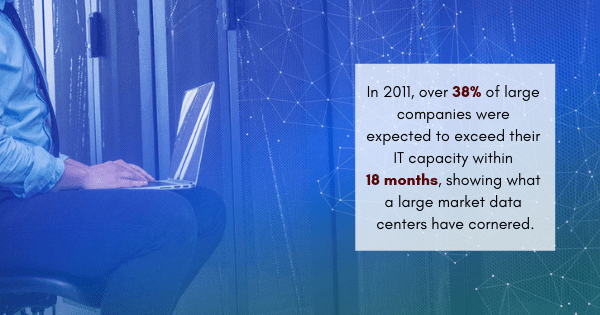
Data centers represent the future of information. By utilizing a wide variety of electronics racks and server rack sizes, data centers have developed the ability to keep up with expanding businesses of all kinds; in 2011, over 38% of large companies were expected to exceed their IT capacity within 18 months, showing what a large market data centers have cornered.
However, data centers are not without their Achille’s Heel: the addition of more network racks and data cabinets means a higher risk of failure due to increased temperatures. As a result, more energy must be spent to keep this vital equipment cool, either through hot aisle containment systems or cold aisle containment systems (or both). Let’s take a look at some of the factors that may drive and restrict containment system use in the coming years.
Drivers
Cold and hot aisle containment systems work to keep data center technology from overheating. By increasing their cooling capacity, they are able to both reduce energy consumption (which accounts for a huge portion of upkeep costs) and provide longer hardware life. When businesses don’t need to sacrifice uptime for technological repairs, the company is able to make more money and work more efficiently; this could be the differentiating factor between you and your company’s biggest competitor.
Restraints
Unfortunately, these systems have their limitations; some equipment may not fit into the standard data rack rows due to their OEM cabinet design. Furthermore, the construction of cold aisles may interfere with the building’s fire protection and lighting design due to their intermediate ceiling. Additionally, hot aisle containment systems can create environments unsuitable for technician maintenance because of the high temperatures involved.
In short, even the vital systems involved in cooling data centers come with specifications that must be adhered to. With a market that continues to grow at a near exponential rate, the variety of containment options will surely advance and expand on its own (such as with artificial intelligence and machine learning developments); the two industries are so intimately connected that one cannot succeed without the other. Though there are a number of alternative options, only time will tell which one comes out on top.
